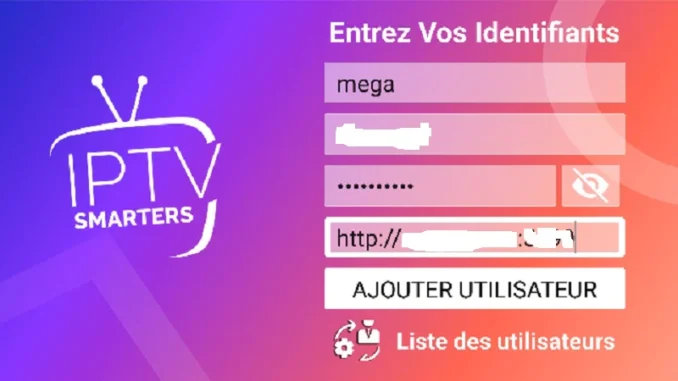
In today’s rapidly evolving world of technology, traditional television is facing a new contender: Internet Protocol Television, or Code IPTV. As internet speeds increase and streaming platforms dominate, IPTV is quickly gaining attention as an alternative to conventional cable and satellite television services. In this article, we will explore what IPTV is, how it works, its advantages, and its potential impact on the future of television entertainment.
What is IPTV?
IPTV, or Internet Protocol Television, is a system that delivers television content via the internet rather than through traditional methods like satellite or cable. Instead of receiving a signal through a broadcast antenna or satellite dish, IPTV relies on an internet connection to stream television channels and videos on demand (VOD). It uses Internet Protocol (IP) to deliver media content, which is different from the standard TV broadcast signals that are sent through radio waves or cables.
How Does IPTV Work?
IPTV works by transmitting video content through a secure internet connection, using data packets instead of analog signals or radio frequencies. The process is similar to how you would watch a YouTube video or a Netflix series; however, IPTV specifically delivers live TV and on-demand content to your device.
The IPTV system consists of three primary components:
- Content Source: This includes the TV channels or video-on-demand services that are available for streaming.
- IPTV Gateway: This is the network infrastructure that delivers the IPTV signals over the internet. It may involve servers that store and transmit video streams to users.
- End Devices: Users can access IPTV content through devices like smart TVs, computers, smartphones, tablets, or set-top boxes, depending on the service they subscribe to.
The content can be delivered in various formats, including live TV, video on demand, or time-shifted TV, which allows users to pause, rewind, or fast-forward live broadcasts.
Types of IPTV Services
- Live IPTV: This is the most common type of IPTV, where users can watch television channels in real-time, similar to traditional television services.
- Video on Demand (VOD): VOD allows users to stream movies, TV shows, and other content whenever they choose, without having to follow a set schedule.
- Time-Shifted TV: This feature allows users to pause or record live broadcasts to watch later, offering more flexibility than traditional TV services.
Advantages of IPTV
1. Flexibility and Convenience: IPTV gives users the freedom to watch their favorite content on any device, anywhere, at any time, as long as they have an internet connection. This eliminates the need to sit in front of a traditional television set or follow a rigid broadcasting schedule.
2. Cost-Effectiveness: IPTV services often offer lower subscription fees compared to cable and satellite TV services. Additionally, many IPTV providers bundle services like internet and telephone, providing a more affordable option for consumers.
3. Customization: With IPTV, users have the ability to personalize their viewing experience. From choosing specific channels to creating their own playlists and watching on-demand content, IPTV puts the power of choice in the hands of the viewer.
4. High-Quality Content: IPTV services typically provide high-definition (HD) or even 4K streaming options, ensuring users enjoy high-quality video and audio. Many IPTV platforms also support advanced features such as surround sound and interactive menus, enhancing the overall viewing experience.
5. Advanced Features: IPTV providers often include additional features like multi-screen viewing, interactive applications, and integration with smart home devices. Users can also take advantage of features such as pause, rewind, and fast-forward to enhance their viewing experience.
Challenges of IPTV
While IPTV offers many benefits, it is not without its challenges. A major issue is the dependency on a stable and high-speed internet connection. Users with slow or unreliable internet may experience buffering or poor-quality streams, which can hinder the overall IPTV experience.
Another challenge is the complexity of setting up IPTV systems. Unlike traditional TV setups, which involve simply connecting a cable or satellite dish, IPTV may require users to install and configure specialized equipment, such as a set-top box or streaming apps, which can be intimidating for non-technical users.
Moreover, IPTV service providers often face regulatory challenges, especially in regions where broadcasting laws are more stringent. Some content may be restricted due to licensing agreements or regional broadcasting rights, limiting access to certain shows or channels in different countries.
The Future of IPTV
The future of IPTV looks promising, as more consumers shift away from traditional television models in favor of internet-based services. With the growing demand for on-demand content, live streaming, and personalized viewing experiences, IPTV is positioned to continue growing in popularity.
In the coming years, we can expect to see even more advanced features, such as virtual reality (VR) integration, interactive and immersive content, and even artificial intelligence (AI) recommendations that will make IPTV platforms smarter and more intuitive.
As 5G technology becomes more widespread, IPTV services will benefit from faster internet speeds, reducing buffering issues and enhancing streaming quality. This will make IPTV even more accessible, allowing users to stream high-definition content seamlessly, even on mobile devices.
Conclusion
IPTV is revolutionizing the way we consume television content, offering flexibility, high-quality streaming, and the ability to watch what we want, when we want. While there are challenges such as the need for a stable internet connection and regulatory concerns, the benefits far outweigh the drawbacks. As technology continues to advance, IPTV has the potential to become the dominant platform for television entertainment, shaping the future of how we watch TV.
